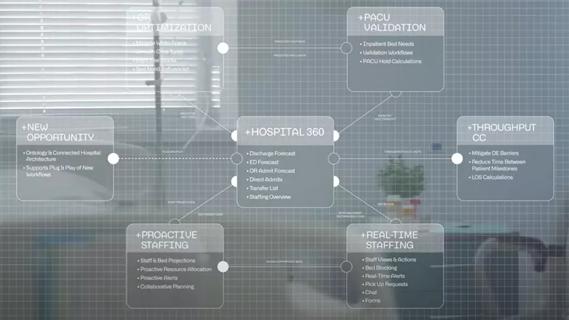Clinical input is integral to technology implementation and adoption strategy

Cybersecure technology is an expensive investment that leads to costly consequences without effective adoption.
Advertisement
Cleveland Clinic is a non-profit academic medical center. Advertising on our site helps support our mission. We do not endorse non-Cleveland Clinic products or services. Policy
As a Cleveland Clinic Cybersecurity Business Liaison, Tracey Touma recognizes how extensive security measures can impact clinical workflows.
She explains, “Protecting patient data is an obvious necessity in healthcare. For decades, we’ve relied on passwords to secure and protect patient data. However, this authentication process is cumbersome when multiple passwords are needed to access clinical applications, even resetting passwords takes valuable time away from patient care.”
To that point, many healthcare organizations have shifted to single sign-on (SSO) functionality, which is cybersecure technology that expedites computer and application access. The technology is vigorously tested prior to integration to ensure alignment with the organization’s security policies and procedures.
“Offering SSO to our clinical caregivers seemed like a logical time-saving solution,” says Touma.
However, SSO adoption rates among caregivers were dismal when the program was first launched.
“The low usage rates were very discouraging,” says Touma. “Technology is too expensive for us to just assume that caregivers will use whatever’s provided. Limited engagement detracts from the technology’s ROI.”
The project was paused to allow Touma and the team to redesign their implementation approach.
While they followed a standard change management model, Touma also took extra steps to identify the obstacles preventing adoption.
For Touma, it started with shadowing caregivers to better understand their day-to-day needs and routines.
Advertisement
“I spent time in the clinical setting to strictly observe the workflow. These sessions were done solely to observe and document their experiences, not to provide suggestions or solutions,” says Touma. “This exercise showed repeated error messages, bottlenecks and system lockouts. Their frustration was palpable.”
Touma and the team then simulated these workflows with the SSO vendor to identify solutions to improve the caregiver experience. Once the modifications were applied, she went back to the clinical setting to gather more feedback.
Touma emphasizes, “Honest feedback, including negative input, is a must to optimize engagement. Even though it’s difficult to hear, the objective is to gain workflow efficiencies that encourage broader adoption.”
She cites one example as the variance between workflows in the ambulatory and inpatient settings.
“We quickly learned that SSO isn’t a one-size-fits-all process,” says Touma. “We had to accommodate for special workflows and consider timeout extensions. Tailoring the technology to complement their specific workflow enhanced the experience, which led to increased adoption.”
Following the shadowing exercise, Touma worked closely with several teams to develop training resources and activities to relaunch the program.
“While survey data showed our caregivers wanted SSO, we initially overlooked some of the steps needed for a smooth transition,” says Touma. “Introducing new technology is a multi-tiered approach that incorporates several modalities to generate awareness and interest before go-live.”
Advertisement
To refine the process, cross-functional teams created supporting material to bridge the gap between technical functionality and clinical workflows.
This collective effort made a significant impact.
Touma shares, “SSO engagement is now at 98%, making us an industry leader. We continue to provide touchpoints and ongoing tips to preserve clinicians’ time and keep the focus on patient care.”
Following the project’s success, Touma recommends applying these five tactics when integrating new technology.
“Efficient technology boosts engagement,” Touma explains. “Start with shadowing to identify adoption barriers and capture input that will help refine the digital solution. Then, build on these findings to determine the tactics needed for broader engagement.”
She adds, “Healthcare technology is always changing. Stay ahead of the curve by proactively developing a repeatable, scalable implementation strategy that combines clinical input and technical expertise — it’s time well spent and saved!”
Advertisement
Advertisement

Digital “tripwires” detect and respond to malicious activity, boosting cybersecurity maturity

Thoughtful collaboration, data-driven decisions and effective change management lead to significant savings

Unit-based project decreases non-urgent alarms

Integrating technology is more than product delivery

Cleveland Clinic partners with Palantir to create logistical command center

Cleveland Clinic’s roadmap to recovering critical digital assets stems from strategic planning and preparedness

The Friends of Cybersecurity program bridges innovative technology solutions with mitigating security risks

Cleveland Clinic’s Information Technology Apprenticeship Program expands skill set while leading to meaningful employment